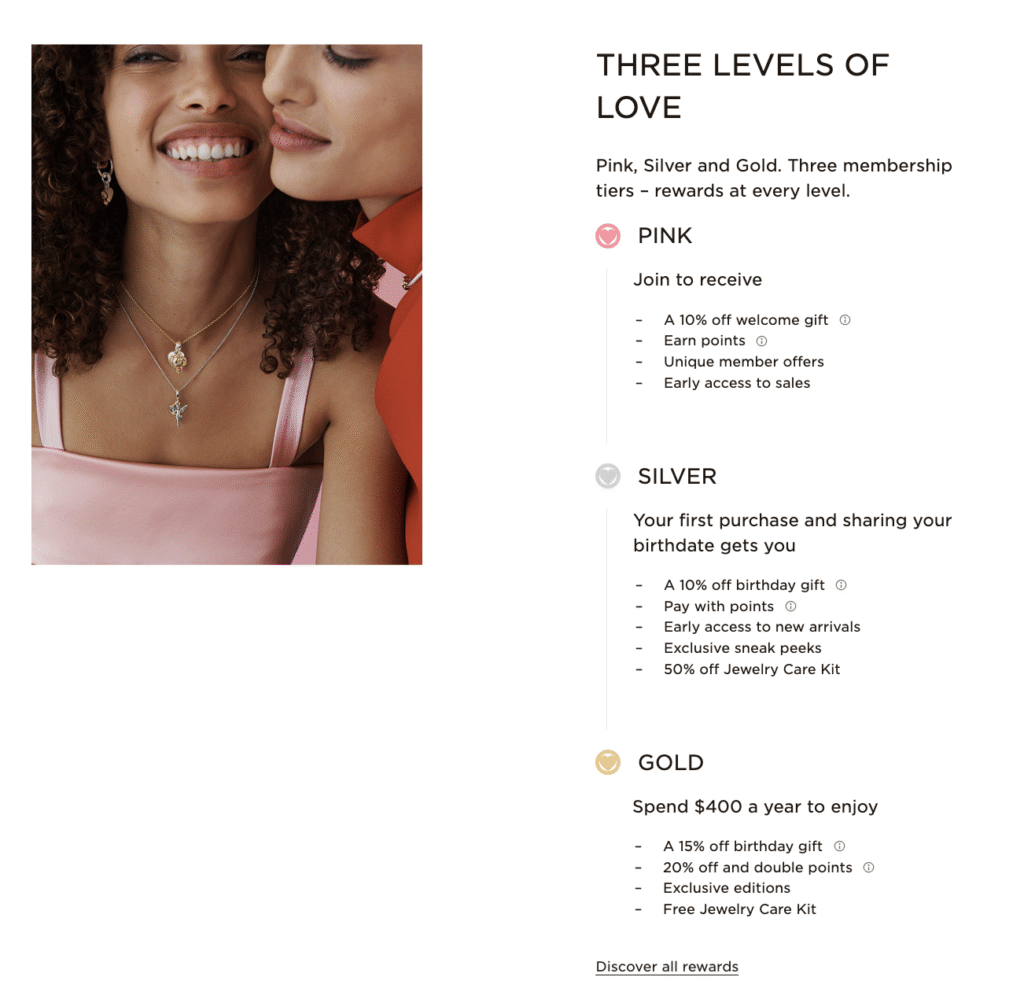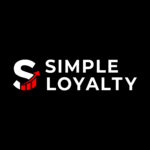Estimated Reading Time: 13 minutes
Whether you’re a fashion retailer, bookstore, or a beauty brand, loyalty programs are no longer just nice-to-haves—they’re essential.
In 2025, a well-designed retail loyalty program is an essential strategy to drive repeat sales and stand out in competitive markets. In this article, we explore real-world loyalty program examples from global and Southeast Asian retailers, showing how both big brands and small businesses are using customer loyalty reward programs to boost engagement and build loyal communities.
Want to know what’s working in 2025? These loyalty program strategies are too valuable to overlook (unlike that forgotten coupon from 2019 still stuck to your fridge).
Why Does Every Retail Business Need a Loyalty Program in 2025?
What’s the use of a retail loyalty program anyway? Customers today expect more than great products; they want brands that reward and remember them. A well-designed customer loyalty program not only incentivizes repeat business, but creates a deeper emotional connection with your brand. That’s where a strong retail loyalty program shines. Let’s break down the key benefits that show why it’s a business essential.
Key Benefits of Retail Loyalty Programs
- Boosts customer retention and reduces churn
- Increases AOV (average order value) and frequency
- Encourages word-of-mouth referrals and organic growth
- Provide valuable customer data for personalized marketing
Whether it’s a customer loyalty card software system or an SMS-based loyalty program, the goal remains the same: to keep customers coming back for more. In fact, a report shows 70% of millennials and 62% of Gen Z are more likely to choose a brand if it offers a loyalty program.
Because let’s face it, who doesn’t love feeling a little extra appreciated?
How to Build a Loyalty Program From Scratch
If you’re just starting out, launching a loyalty program might seem a little bit daunting. But with the right structure and tools, it’s absolutely doable (even if you’re a small retail business).
Try this simple framework to help you get started and set your loyalty program strategy up for long-term success:
1. Determine Your Loyalty Objective
Always kick things off with a clear goal. A loyalty program without a clear objective is just another gimmick. Your business goals give every later decision a better sense of direction and purpose.
Here’s how you should do it:
- Identifying what you wish to achieve: For instance, ask yourself if you’d prefer to retain more customers or increase data collection?
- Next, choose how you’ll measure success: These metrics are useful to track your business’s progress. Think sign-up counts, redemption rates, and sales frequency.
- Then, set a timeframe and target: Let’s assume your goal is to gain 15% more repeat buys in 3 months. Stick to it and assess.
Before choosing your tools or loyalty program structure, understand and set your goals regarding what you wish to achieve. Some common goals include:
- Boosting customer retention
- Collecting customer data to enable future remarketing
- Rewarding loyal customers consistently
- Identifying and treating top spenders with exclusive perks
Defining your objective early helps ensure every decision aligns with the outcome you want. For example, if high-spending VIPs are your focus, membership tiers are the way to go.
2. Choose the Best Loyalty Program Structure
Your loyalty program structure should align with your brand, customer behavior, and marketing goals. Instead of just thinking in terms of “rewards”, think in terms of the customer journey and how you want them to progress.
Here are common types of loyalty program models for retail:
- Stamped loyalty card– This model focuses on rewarding frequency and is ideal for smaller businesses like bookstores or fashion boutiques.
- Points-based system– If you’re looking to increase repeat visits, this loyalty program model helps customers earn points per RM or dollar spent and redeem them for discounts or freebies. Because few things say “thank you” like a free latte.
- Membership tiers (Tiered Loyalty Programs)– Some businesses prefer having silver, gold, platinum levels that unlock better perks with higher spend to reward customer loyalty over time.
- Perks-based models– Rewards like birthday perks, VIP invites, and early access to sales will work well for lifestyle and beauty brands.
- Hybrid loyalty programs– This loyalty program model combines tiers and points for personalization.
💡 Pro Tip: Choose a loyalty program structure that supports your objective. If your goal is to identify and nurture your best customers, a tiered loyalty program is the way to go.
3. Pick a Platform That Fits
Now that your business goals and structure are clear, it’s time to choose the right loyalty program platform. You want something that’s easy to integrate with your POS (point-of-sale) or eCommerce store and supports features like SMS notifications, customer segmentation, and real-time points tracking.
💡 Pro Tip: Avoid overly complex systems that frustrate customers or involve too many steps to redeem rewards. Your customers want loyalty points, not an obstacle course. A great loyalty program will enable you to launch an automated system with minimal setup.
4. Promote It Everywhere
Even the best retail loyalty program won’t work if no one knows about it. So, what’s the hold up? Tell all your customers about it!
You can do this by:
- Adding sign-up prompts to your website
- Launching an email campaign to your existing customer list
- Displaying QR codes at checkout counters
- Promoting via social media platforms such as TikTok and Instagram
💡 Pro Tip: Don't forget to train your staff to mention the loyalty program at checkout and explain the benefits clearly.
5. Track Performance and Optimize
After successfully launching your loyalty program, track your program’s performance regularly. Are you meeting your original goals?
Key loyalty program metrics to monitor include:
- Repeat purchase rate
- Engagement with promotions/perks
- Redemption rates
- CLV (Customer lifetime value)
Take this opportunity to use customer data and feedback to refine rewards, communication methods, or sign-up processes. Remind yourself that a good loyalty program evolves with your customers.
So, if your metrics aren’t moving—get moving!
Top Fashion, Jewelry, and Footwear Loyalty Programs in 2025
Clothing
Levi’s Red Tab Loyalty
Levi’s Red Tab program has become a global benchmark for loyalty-driven fashion retail, with over 38 million members worldwide. Their loyalty program provides personalized product suggestions, exclusive member-only product drops, and early access to seasonal launches.
Levi’s Red Tab Member Program (Image retrieved from Levi’s official website)
Loyalty program features
- Points per purchase, birthday rewards, and early access to product drops
- Personalized offers based on shopping history
- Free shipping for members
Why it works
Levi’s uses data to create hyper-personalized offers and deliver tailored experiences to their customers via email and app notifications. By giving members early access to limited collections, Levi’s generates anticipation and boosts purchase urgency.
Results
Red Tab members now account for over 50% of Levi’s direct-to-consumer sales. The program’s combination of perks and personalization has proven especially successful among Gen Z and millennial shoppers.
Takeaway
Even legacy brands are innovating with modern loyalty experiences, using personalization to drive value.
Padini Rewards Program
Padini, one of Malaysia’s biggest fashion retailers, has adopted a simple and effective points-based model. RM1 spent = 1 point, redeemable for vouchers. What makes this loyalty program effective is its broad accessibility and frequent promotional tie-ins with seasonal sales.
Padini Rewards Program (Image retrieved from PADINI’s official website)
Loyalty program features
- RM1 = 1 point
- Points redeemable for vouchers
- Exclusive access to sales
Why it works
Padini keeps its loyalty program simple and easy to understand. Paired with frequent storewide promotions, this clear value keeps customers coming back.
Results
- Boost in member sign-ups and repeat visits
- High redemption rate of loyalty vouchers
Takeaway
Padini remains one of Malaysia’s largest fast-fashion retailers, with over 100 stores and 500 million pieces of clothing sold annually. Forget fancy, overcomplicated tech. All you need is a simple and transparent customer reward system that’s guaranteed to work wonders, especially when paired with storewide events and mobile integration.
Footwear
Schuh Club
Schuh’s loyalty program taps into the student demographic. Their members receive double points during back-to-school months and year-end clearance.
The Schuh Club (Image retrieved from Schuh Club’s official website)
Loyalty program features
- £1 = 1 point; £5 discount = 100 points
- Double points
- Multi-channel integration: Use online or in-store via app, QR, or wallet ID
Why it works
- Integration with their mobile app
- Seamless checkout rewards (both online and offline)
- Personalization via Salesforce CRM tools
- Segment perks based on student holidays
Results
- Higher repeat purchases and average order value
- Stronger personalization using Salesforce’s loyalty tool to track omnichannel behavior
Takeaway
Schuh Club demonstrates that even a straightforward points system (when powered by digital integration and targeted student perks) can drive loyalty and lift revenue without complex tiers.
Jambu & Co.
New York’s Jambu & Co. combines a robust omnichannel loyalty program system with machine learning to deliver personalized experiences.
Jambu Rewards (Image retrieved from Jambu & Co.’s official webpage)
Loyalty program features
- Omnichannel points: Customers earn points not just from purchases, but also through account sign-ups.
- Engagement incentives: Bonus points promoted during events, with personalized loyalty emails that nudge customers to take action.
- Data-driven segmentation: Using machine learning, customer behavior is analyzed and grouped to deliver tailored campaigns that resonate with each segment.
Why it works
Their CRM segments users based on behavior and uses predictive analytics to launch personalized campaigns across email and social media platforms.
Results
- 32% increase in customer retention
- 3x sales spike during targeted bonus campaigns; improved emotional loyalty and advocacy
Takeaway
Jambu & Co. shows that leveraging both transactional and social engagement, coupled with AI-powered personalization creates a loyalty ecosystem that fuels brand advocacy and sustained sales growth.
Jewelry
Pandora
Pandora’s global loyalty program blends the best of tiered and points systems. What this means is members earn points per purchase and unlock access to limited-edition charms, exclusive invites, and early product releases. The program is integrated into the Pandora app, creating a frictionless experience.

My PANDORA (Image retrieved from Pandora’s official webpage)
Loyalty program features
- Combines tiered levels with points-for-purchase (varies)
- Perks include exclusive product drops, birthday perks, and app-based loyalty card scanning.
Why it works
Pandora leverages emotional branding, particularly around anniversaries and personalization. Their loyalty program encourages repeat purchases and engagement by assigning value beyond the product. For instance, a limited number of Mother’s Day charms will be released during the holiday for customers.
Results
- 6,800+ global points of sale across 100+ countries
- 102 million jewelry items sold in 2021
Takeaway
Pandora uses a hybrid loyalty strategy. They combine tiers, points, and experiential perks to foster recurring purchases. Their model highlights the importance of adapting loyalty to local market behaviors. For emotional categories like jewelry, experiences matter just as much as discounts.
Top Bookstore Loyalty Programs in 2025
Loyalty Bookstore
Located in Washington D.C., Loyalty Bookstore celebrates community.
Loyalty Membership Programs (Image retrieved from Loyalty Bookstore’s official webpage)
Loyalty program features
- Subscription-based loyalty
- Offers members curated book recommendations
- Early invites to indie book launches
- Access to monthly book clubs
Why it works
Loyalty Bookstore thrives by centering its loyalty program around indie curation and reader engagement. Its subscription model and curated experiences cater to book lovers who value discovery, connection, and supporting local literary voices.
Results
- Strong community engagement
- Doubled monthly return customers
Takeaway
Loyalty programs for small businesses work best when they focus on community and shared values. This strategy can increase customer retention rates by up to 30%, particularly when combined with engaging events like book clubs or author talks.
Barnes & Noble
Another New York favorite, Barnes & Noble’s Premium Membership program takes a hybrid approach, offering both free and paid membership tiers that provide perks for avid readers and casual shoppers alike.
Barnes & Noble App (Image retrieved from App Store)
Loyalty program features
- 10% discount on almost everything in-store and online
- Free shipping with no minimum
- Member-exclusive offers and early access to new releases
- Physical card + digital account integration
Why it works
Barnes & Noble offers a mix of immediate savings and exclusive perks for readers. The program’s hybrid structure appeals to book lovers who value both convenience and deeper engagement with the brand. On top of that, with options for both free and premium memberships, customers can choose the level of benefits that suits their reading habits.
Results
- Millions of members across the U.S.
- Strong conversion to paid Premium tier due to valuable in-store perks
Takeaway
A bookstore loyalty program doesn’t need to be complicated. Barnes & Noble shows that providing real savings, early access, and flexible options (both digital and physical) is a winning combo. For U.S. retailers, it’s a reminder that giving customers choice and tangible value keeps them coming back—especially in niche retail categories like books.
Top Beauty & Cosmetic Loyalty Programs in 2025
Sephora
Sephora’s Beauty Insider is one of the world’s most recognized tiered loyalty programs.
Sephora Beauty Insider (Image retrieved from Sephora’s official webpage)
Loyalty program features
- Tiered rewards based on spend
- Points for products, experiences, and gifts
- Member-exclusive launches and events
Why it works
Sephora gamifies loyalty. Customers feel motivated to reach higher tiers as rewards become increasingly desirable. They chase status tiers as eagerly as discounts—both drive engagement.
Results
- Over 25 million members globally
- Massive repeat purchase rate
Takeaway
One of the world’s most successful loyalty programs, Sephora’s Insider works well as it offers status and exclusivity, not just points.
Key Trends in Loyalty Programs 2025
Loyalty programs have come a long way from basic punch cards and generic discounts. In 2025, it’s all about crafting experiences that feel personal and worth sticking around for.
Here are some of the biggest loyalty trends retailers are embracing right now:
Personalization
Personalization is non-negotiable. Customers want to feel like you get them—and in 2025, there’s no excuse not to. Thanks to AI (artificial intelligence) and smarter tools, retailers are able to tailor rewards based on purchase history and even preferred product types.
Generic discounts no longer impress shoppers. As a matter of fact, research shows that 71% of consumers expect brands to deliver personalized interactions. 76% of the same consumers get frustrated when this isn’t implemented. So, unless your goal is to be the brand version of a wrong pizza order, personalization is a must.
For instance, other brands like Levi’s use data to tailor exclusive early access to product drops, while Pandora targets shoppers with charm suggestions based on previous collections. These personalized gestures build emotional loyalty and make customers feel seen, not just sold to.
Seamless Integration
Everything needs to be connected. No one is willing to go the extra mile just to earn or redeem rewards. The best loyalty programs are embedded in apps, POS (point-of-sale) systems, and even SMS.
This means points update instantly, rewards are easy to redeem at checkout, and your customers leave feeling satisfied. When your POS, CRM, and messaging tools like WhatsApp or SMS are integrated, you reduce friction and get people hooked.
In Malaysia, Padini’s loyalty program integrates with their e-commerce store, ensuring customers can view point balances in real time, apply vouchers at checkout, and receive SMS alerts on exclusive offers. This frictionless setup is especially valuable in fast fashion retail stores.
Focus on Community
Customers want to feel like they belong to something. It’s not just about the points anymore. The most memorable loyalty programs today are the ones that build a community. Think: early access or invites to private events.
These small touches go a long way in making people feel like they’re part of something special (no secret handshake required).
Althea takes a digital-first approach, encouraging members to post reviews and unboxings. Their loyalty program system incentivizes social engagement and transforms customers into brand advocates who help grow the community organically.
Beyond Transactions
To customers, it’s more than just about earning points. Sure, discounts are nice—but in 2025, what customers really want is recognition. Points are cool, but exclusive content, experiences, and recognition are way better. That’s why smart businesses are moving beyond transactional rewards, and are offering early product drops, tiered perks, and even surprise bonuses.
Kinokuniya adds emotional value to shopping by offering double points on birthdays and exclusive invites to author signing sessions. By making rewards experiential rather than purely transactional, they turn the bookstore into more than just a retail space.
Ultimately, transactional rewards alone don’t cut it anymore. Brands that think beyond points win long-term loyalty.
Conclusion
Ready to create a loyalty program for your retail store?
Whether you’re launching a simple punch card style rewards system or going all in with a full-featured customer loyalty app, the most important thing is starting with your customer in mind.
In 2025, smart retailers are using loyalty tools to drive repeat sales and increase customer lifetime value. With solutions like SimpleLoyalty, building and managing your retail loyalty program across channels like POS, WhatsApp, or SMS has never been easier.
Want expert help designing a loyalty program that truly works? Let’s start building a loyalty strategy that’s guaranteed to woo your customers and have them come back for more (and maybe even bring a friend or two).

